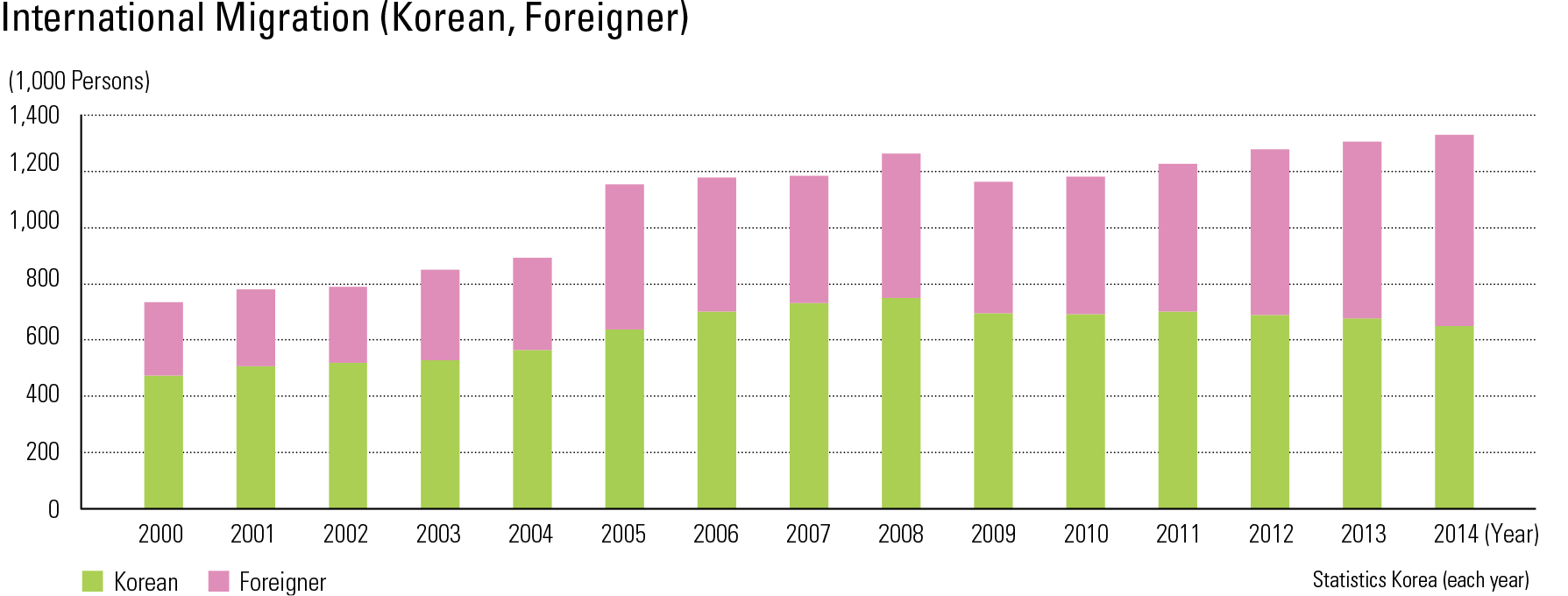English III
Population migration can be characterized ac- cording to duration of stay, location, distance, and motivation. Domestic migration is a move within a national border, while international migration crosses an international border. Domestic migra- tion can also be an in-migration or an out-migra- tion. The in-migration refers to a migration from another area to a given area across an administra- tive boundary. In the same manner, the out-migra- tion refers to a migration from a given area to an- other area across an administrative boundary. Net migration is the difference between in-migration and out-migration. If the number of in-migrants i arger than the number of out-migrants, there will be an in-migration surplus. In the opposite case, there will be an out-migration surplus. The num- ber of total migrants is the sum of in-migrants and out-migrants, and the migration rate is calculated as follows. Korea’s domestic migration had increased over many years during the industrialization and urban- ization periods. Currently, it is gradually decreas- ing because of better transportation and an aging population. An examination of domestic migration in four regions—the Greater Seoul Metropolitan area (i.e., Seoul, Incheon, and Gyeonggi-do), cen- tral region (i.e., Daejeon, Gangwon-do, Chungc- heongbuk-do, Chungcheongnam-do, and Sejong Special Self-Governing City), Honam region (i.e., Gwangju, Jeollabuk-do, and Jeollanam-do), and Yeongnam region (Busan, Daegu, Ulsan, Gyeo- ngsangbuk-do, and Gyeongsangnam-do)—reveals that the migration to the Greater Seoul Metropol- itan area intensified during the 1970s and 1980s as people moved for jobs and schools. After the 1990s, regionally balancing development policies were implemented to relieve congestion in the Greater Seoul Metropolitan area, and public in- stitutions and private corporations were relocated to outside the Greater Seoul Metropolitan area. In the Greater Seoul Metropolitan area, including Seoul, Incheon, and Gyeonggi-do, the data reveal that net out-migration from Seoul to Incheon and Gyeonggi-do has increased since the 1990s. Seoul’s population was at its peak with 10.6 mil- lion in 1990. Since then, the population has been gradually decreasing, and most out-migrants have settled in Incheon or Gyeonggi-do.
page_2 |


